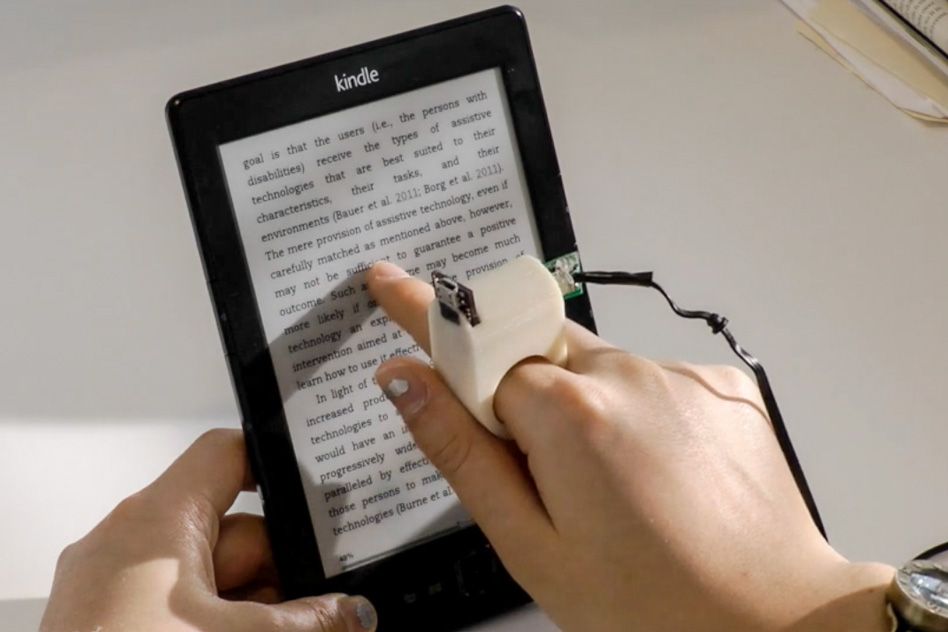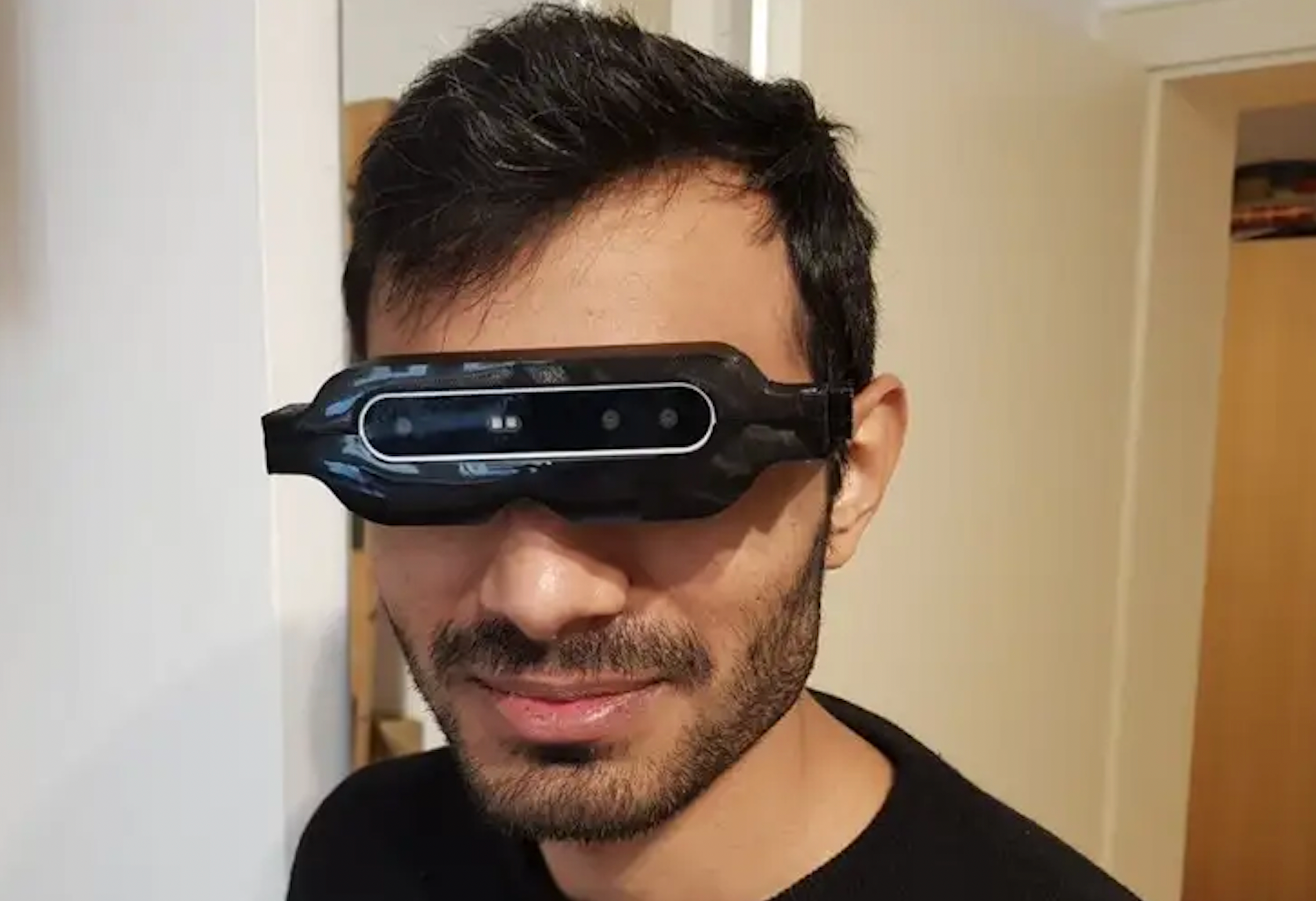Screen Readers for the Blind: Essential Devices for Digital Access
Screen Readers for the Blind: Essential Devices for Digital Access
Blog Article
Empowering Independence With Assistive Innovation for the Blind
The combination of assistive innovation into the lives of individuals with visual problems stands for a considerable advancement in advertising independence and self-sufficiency. From cutting-edge screen visitors to innovative smart walking canes, these devices not only improve everyday navigation and communication however additionally equip users to engage meaningfully in various facets of life. As we discover the myriad advantages and real-world applications of these innovations, it becomes essential to analyze the underlying variables that add to their efficiency and the possibility for future growths in this important field.
Overview of Assistive Innovation

The growth of assistive innovation is based in concepts of inclusivity and empowerment. Advancements in software program, equipment, and sensory enhancements give users with alternatives customized to their particular needs. From display readers that convert message to speech, to responsive tools that share details with touch, these tools transform the method individuals engage with their surroundings.
In enhancement to useful applications, assistive modern technology cultivates greater social incorporation and participation in different markets, consisting of education and learning and employment (Braille displays and notetakers). As research and development proceed to progress, the capacity for assistive technology to additionally enhance the lives of visually impaired individuals continues to be encouraging, leading the way for an extra equitable society where every person can thrive
Types of Assistive Devices
A range of assistive tools have arised to support people with visual problems, each developed to satisfy details needs and boost daily functioning. These tools vary from low-tech solutions to sophisticated innovations, giving diverse options for customers.
Low-tech gadgets consist of magnifiers and large-print products that assist in analysis and writing. Braille tools, such as Braille stylus pens and slates, enable responsive reading and communication. Orientation and movement aids, like white walking canes, help users navigate their environment securely.
On the higher end of the range, digital zoom systems and screen visitors supply significant assistance. Digital magnifiers allow individuals to enlarge message and images on displays, while screen readers transform electronic web content into synthesized speech, helping with access to information on computers and smart devices.
Smartphone applications also play a vital duty, supplying functions like text acknowledgment and navigation support. Wearable technology, such as clever glasses furnished with increased reality, is arising as an appealing device to boost situational awareness.
Advantages of Assistive Modern Technology
The combination of assistive technology substantially improves the lifestyle for individuals with aesthetic impairments. These innovations encourage individuals by advertising freedom, allowing them to browse their settings better and do day-to-day jobs with greater convenience. For instance, screen visitors and zoom software application allow individuals to gain access to electronic info, fostering professional and educational possibilities that may have formerly been out of reach.
Additionally, assistive tools such as smart canes and general practitioners applications supply real-time navigating support, improving mobility and safety and security. This enhanced freedom not just improves self-esteem however also encourages social interaction, enabling customers to take part even more fully in their neighborhoods.
Assistive innovation also assists in communication, aiding individuals link with others with voice acknowledgment and text-to-speech applications. This capability is crucial for keeping relationships and accessing vital details.
Furthermore, the modification alternatives readily available with several assistive innovations ensure that users can tailor devices to their particular needs, even more boosting usability anonymous and effectiveness. In general, the benefits of assistive technology for individuals with visual problems are extensive, advertising an extra comprehensive society where every person can pursue their desires and objectives.
Study and Success Stories
Highlighting the transformative impact of assistive innovation, numerous study show exactly how individuals with visual problems have actually effectively integrated these devices right into their day-to-days live. One compelling instance entails an university student that used display analysis software application to browse scholastic materials and on-line resources properly. This modern technology not only facilitated her education however additionally improved her self-confidence in taking part in conversations and team jobs.
Another case study includes an expert that uses a smart device application designed for navigating and object acknowledgment. By using this app, he has regained freedom in both his individual and workplace, allowing him to commute separately and involve with associates better.
In addition, a retiree shared her experience with braille e-readers, which enabled her to access a large variety of literature and stay gotten in touch with her community with publication clubs.
These success stories highlight the critical role of assistive innovation in promoting self-reliance, improving high quality of life, and promoting social combination for individuals with visual impairments (Speech-to-text devices for low vision). By accepting these cutting-edge devices, customers can get rid of obstacles and confiscate chances that contribute to their individual and expert gratification

Future Patterns in Assistive Innovation
Development in assistive technology is poised to redefine the landscape of assistance for people with aesthetic impairments. Emerging patterns stress the assimilation of expert system (AI) and device learning, which enhance the functionality of tools that assist with navigating and info ease of access. For instance, AI-driven applications are now capable of interpreting visual data in real-time, enabling users to involve with their setting much more individually.
Additionally, the advancement of wearable modern technology is progressing quickly. Smart glasses outfitted with augmented fact (AR) can offer audio summaries of environments, changing exactly how individuals connect with public spaces. These tools not only promote freedom yet likewise foster social inclusion.
In Addition, the Web of Points (IoT) is making homes smarter, permitting seamless connection between assistive devices and day-to-day appliances. This connection equips users by making it possible for voice-activated controls and computerized responses tailored to private needs.
Verdict
Finally, assistive technology plays an essential function in equipping individuals with aesthetic problems by enhancing their self-reliance and interaction with their surroundings. The diverse variety of gadgets and applications readily available not only facilitates navigating and communication yet also advertises social integration and possibilities for specialist and individual development. As developments proceed in this field, the potential for improving the top quality of life for those with aesthetic impairments will certainly increase, promoting higher autonomy and empowerment.

Report this page